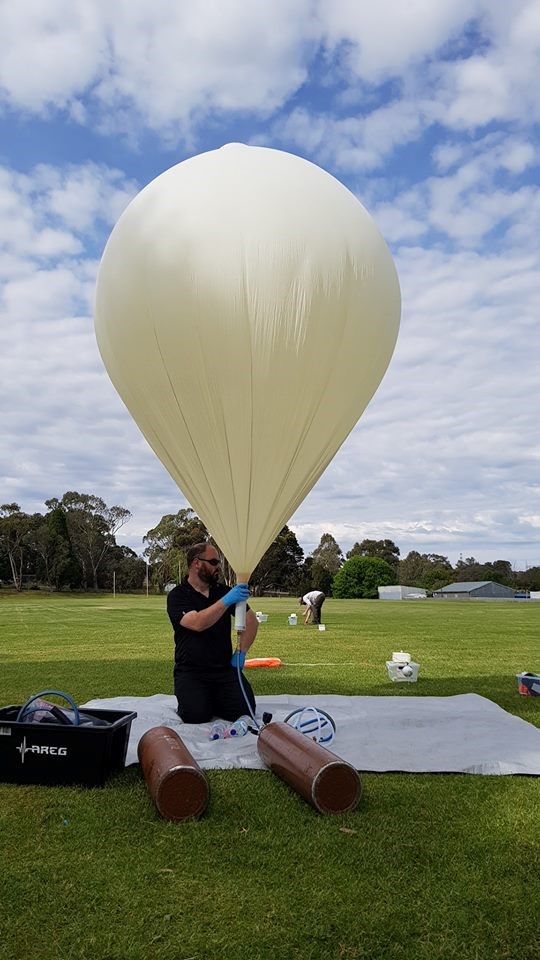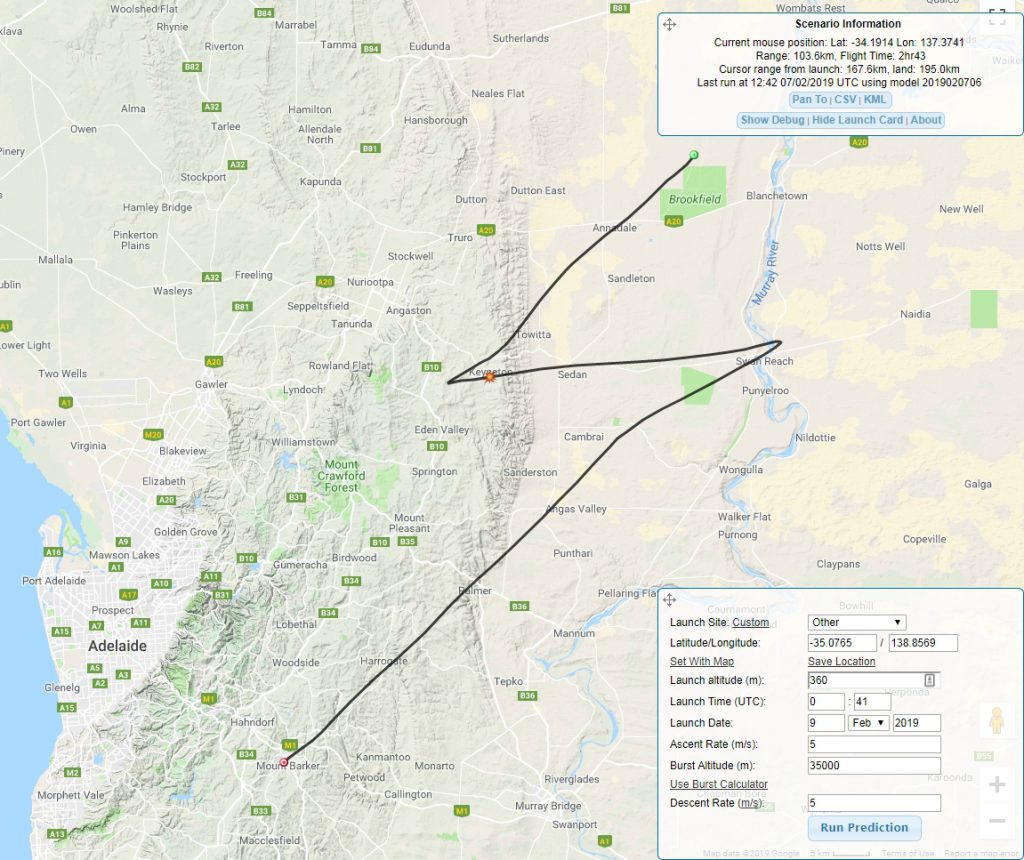Horus 52 – Saturday 9th February 11.00am Liftoff!
 AREG is pleased to once again be involved with the International Space University’s Southern Hemisphere Space Studies Program hosted by the University of South Australia. This year one balloon is being launched from Mt Barker High School as part of the program. All amateurs across the state are invited to participate in the flight through collecting the RTTY telemetry. All you need is an SSB receiver on 70cm, and an interface to your computer. The rest is software!
AREG is pleased to once again be involved with the International Space University’s Southern Hemisphere Space Studies Program hosted by the University of South Australia. This year one balloon is being launched from Mt Barker High School as part of the program. All amateurs across the state are invited to participate in the flight through collecting the RTTY telemetry. All you need is an SSB receiver on 70cm, and an interface to your computer. The rest is software!
You can find out more about the software you need to track the balloon via our software tracking page
Telemetry Payloads
As always, we’ll be flying the usual assortment of telemetry payloads, including:
- Our usual 100 baud 7N2 RTTY telemetry on 434.650 MHz USB. This can be decoded using dl-fldigi, with a reception guide available here. NOTE: There is a known issue with dl-fldigi where it does not upload any received telemetry until about 10 minutes after the software is started. Any telemetry received in this time period will be queued and uploaded after the startup period has completed (i.e. no telemetry will be lost).Note: Recent testing of dl-fldigi’s decode performance has found that the auto-configured RTTY receive bandwidth is too narrow, and can detrimentally impact decode performance (by up to 3dB!).
 To fix this, open dl-fldigi, and in the Configure menu, select Modems, and then go to the ‘RTTY’ tab. Drag the ‘Receive filter bandwidth’ slider to 200, then click ‘Save’. Note that this setting will be reset whenever you hit the ‘Auto-Configure’ button!
To fix this, open dl-fldigi, and in the Configure menu, select Modems, and then go to the ‘RTTY’ tab. Drag the ‘Receive filter bandwidth’ slider to 200, then click ‘Save’. Note that this setting will be reset whenever you hit the ‘Auto-Configure’ button! -

4FSK Telemetry decoder
The new 4FSK Binary telemetry will be transmitting on 434.640 MHz USB. This uses a separate decoder, with setup instructions for this available here. We would love reports of how the 4FSK signal compares to standard RTTY!
Wenet Imagery Payloads
This flight will feature two ‘Wenet’ high-speed imagery payloads, as have been flown on many previous Horus launches. The centre frequencies for the transmissions are:
- 441.200 MHz – Nadir-pointing (Downward) Imagery
- 443.500 MHz – Horizon-pointing Imagery
These will be downlinking HD pictures throughout the flight, which will be available at this link:
Reception of the Wenet signal requires a RTLSDR and a Linux PC/Laptop. Instructions on how to set up the required software are available here.
Note that users running an ‘older’ version (Circa mid-2018) of the Wenet receiver software will need to apply a -220kHz offset to the above frequencies in their setup_rx.sh file (i.e. 440980000 or 443280000) – or just leave them at their defaults, which should already be correct.. Those running the latest version can just define the centre frequency as-is. Older versions of the Wenet software will show a lot of ‘Unknown Packet Type’ messages due to some new telemetry formats we are trialling on this flight.
Online Tracking
 Tracking of the flight will be available on the HabHub Tracker, available at this link. (Note that other balloon launches will also be visible on this page, including the Bureau of Meteorology launches from Adelaide Airport).
Tracking of the flight will be available on the HabHub Tracker, available at this link. (Note that other balloon launches will also be visible on this page, including the Bureau of Meteorology launches from Adelaide Airport).

